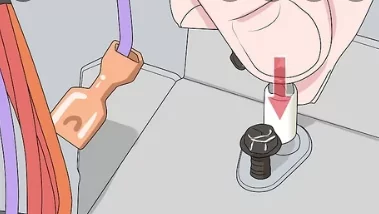How to Fix a Flame Sensor Furnace

If your flame sensor furnace is not working properly, you can do a few things to fix it. Troubleshooting, cleaning, and replacement are just some of the things you should try. If you have a problem, make sure to follow the instructions provided below. Once you are done, you can try reassembling the furnace. After you’ve reassembled the furnace, check that the flame sensor works correctly. The furnace should turn on at a temperature that’s one degree below ambient temperature.
Troubleshooting
If you’ve been experiencing difficulty with the heat from your furnace, you may have a dirty flame sensor. It is possible to clean the sensor with an emery cloth, but make sure you use fine grit instead of medium. If you can’t find the sensor, contact a heating and cooling specialist in your area for assistance. A dirty sensor could be the result of serious heating system problems. If this happens, call a heating and cooling expert in Cleveland, Tennessee.
If the problem persists, contact a licensed HVAC professional. A dirty flame sensor could be the cause of your furnace’s short cycling. If it doesn’t detect heat, the furnace will send a signal to shut the gas valve. This shuts down the furnace, resulting in no heat. Short cycling can happen as many as three times before the furnace locks out. A cracked flame sensor is another cause. It can still operate, but it should be cleaned by a professional.
A clean flame sensor will prolong the life of your furnace. To clean the flame sensor, turn the furnace off and unscrew the mounting screw on the flame sensor. After the sensor is removed, you should check for soot, burnt particles, or slight corrosion. You can clean the sensor with steel wool, emery cloth, or light-grid sandpaper. Be sure to double check the flame sensor to ensure it’s clean.
If cleaning the flame sensor is not enough to fix the problem, you may want to replace it. The flame sensor may have become dirty or corroded and need to be replaced. Clean it carefully before installing the new one. If these measures do not work, contact a repair technician for help. They can inspect the flame sensor and fix the issue if necessary. But if the sensor is corroded, it’s better to call a professional.
A flame sensor looks like a thin metal rod mounted on the burner assembly. Its porcelain color can help distinguish it from a thermocouple. Most flame sensors are straight, though some are angled or have a 45-degree bend near the end. They are wired with one wire and push a part of the flame sensor into the combustion chamber, where heat is produced. If you suspect the sensor is malfunctioning, you can use a multimeter to measure the microamps that are present in the flame sensor.
Cleaning
In order to prevent your heating system from not working properly, you should clean the flame sensor of your furnace regularly. This task will only take a few minutes, but it will extend the lifespan of your furnace. To prevent further damage to your heating system, you should clean your flame sensor every season. Make sure it is free of soot, dirt, and residue. In case your furnace doesn’t function properly, you might need to replace the flame sensor.
The flame sensor is made of a thin metal rod that is typically located within the burner assembly. You can easily access it with a wrench or driver. Afterwards, you can clean it by using sandpaper, steel wool, wire brush, or a cloth. Check to see if it still operates after cleaning. Otherwise, consult a professional. Clean the flame sensor and reinstall it. Once you have cleaned it, be sure to test it by turning on your furnace and checking for problems.
If the flame sensor is still working properly after cleaning, you may need to replace it. You can do this yourself or call a service repair technician. A technician can help you with this. You should know the model of your furnace and what kind of flame sensor it has before you get started. To clean the sensor, use an abrasive pad and Emery cloth to remove dirt and other debris. You should then wipe it clean with a clean lint-free cloth. When you’re finished, mount the access panel and tighten its retaining knobs and screws. Turn the gas supply back on.
If your furnace’s flame sensor is dirty, it is a good idea to clean it periodically. If the flame sensor has a cracked or corroded tip, you should remove this soot and make sure it is thoroughly cleaned. Otherwise, you will have a furnace that will constantly short cycle. When your furnace starts to short cycle, it could mean that the flame sensor has stopped working properly. To resolve this problem, you should replace the sensor.
Replacing
The first step in replacing the flame sensor in your furnace is to turn off the power to the unit. If the flame sensor is bad, the furnace will not operate correctly, and will shut off before it can sense heat. To remove the old sensor, unscrew the mounting screws and open the access panel. The flame sensor is a thin metal rod mounted inside the burner assembly. It can be accessed with a screwdriver or driver. You should clean it with sandpaper or steel wool to remove any debris that may have accumulated over time. To avoid damaging the flame sensor, wipe it clean with a cloth or paper towel afterward. You may also want to unplug the furnace from the breaker box.
A faulty flame sensor is another common issue. If the pilot light in your furnace often needs to be relightened, there’s a good chance that it’s a faulty flame sensor. When this happens, the furnace can run inefficiently and result in a higher energy bill. Replacing a faulty flame sensor can help solve these problems, and it’s a simple, affordable fix.
To replace the flame sensor in your furnace, disconnect the electrical wires from the control box. Then, remove the flame sensor by unscrewing the mounting screws. Next, install a new flame sensor in the same location as the old one. After installing the new sensor, reconnect the wire leads and reconnect the control box. Then, turn on the furnace and test it to ensure that it works properly. After replacing the flame sensor, make sure that it’s working properly before turning it back on.
Changing the flame sensor can be a simple process, and the process is usually easier than you might think. Once you’ve removed the screws, the next step is to remove the cover and access panel. The cover will often be on the sides of the furnace, or on the lower part near the duct. Next, loosen the screws and undo the clips holding the cover in place. Then, gently tilt it towards the direction it points. Then, lift it off.
Positioning
If you want to know how to properly position your flame sensor, you need to know how it works. The basic operation of a flame sensor is to use the Seebeck effect, which occurs when dissimilar metals are subjected to high and low temperatures. The flame sensor is a metallic rod that has been bent at 90 degrees with one type of metal at its tip and the other on its base. A small amount of current flows through the flame sensor, signaling the furnace board that there’s a flame present.
To position the flame sensor, you first need to make sure that the furnace is on. You need to make sure that the furnace is off. This will prevent the buildup of gas in your home and potentially dangerous explosions. If the sensor is in a location that is too far from the burner, you’ll need to adjust the flame switch. To do this, you should place a toggle switch close to the sensor. This switch will normally be located on the furnace’s housing, but you can also place it on a wall next to it.
Once you’ve made sure that your flame sensor is off, you can replace it by inserting a new one. Make sure to write down the model and brand of your furnace to ensure that you get the correct part. Start by shutting down the furnace. Then, remove the old flame sensor from the furnace. Disconnect the wire from the sensor, then push the new part into the furnace’s opening. Then, reconnect the wires and test your furnace again to ensure that it works properly.
The flame sensor of your furnace is sensitive to buildup. This can cause a malfunction in the readings. This buildup usually comes from carbon in the fuel. To remove the carbon, you should clean the flame sensor. This will help your furnace work more effectively. If you have trouble positioning the flame sensor, you should contact an HVAC professional in your area. You can also clean the furnace and the flame sensor by following the instructions carefully.
For more valuable information visit the website





